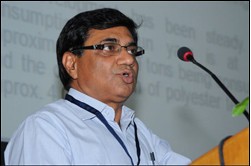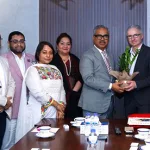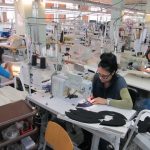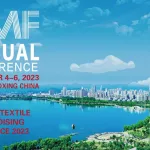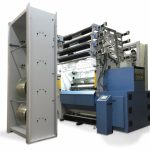Another interesting presentation at the ‘International Conference on Manmade Fibre Textiles’ came from Mr Ajay Sharma who is GM (New Product Development) – RSWM Ltd, a division of the LNJ Bhilwara Group.
It is said that the very first manufacturing of blended polyester/viscose yarn in India was begun by the erstwhile Rajasthan Spinning and Weaving Mills Ltd (RSWM Ltd) in the renowned manmade fibre textile hub of Bhilwara. He put up a strong presentation on the challenges faced by the cotton fibre textile industry and as to why synthetic textiles have better growth opportunity over cotton textiles.
He said, “India is the third-largest cotton producer in the world. Area of cotton cultivation is significantly larger than any other country in the world accounting for about 25 percent of global cotton area, but average yields are the lowest among the top-10 global cotton producers.
He said, “Although area and yield gains have boosted cotton production 2.4 percent annually in past years, but progress in raising yields toward levels achieved by other major global producers has been slow. In addition to low yields, the quality of Indian cotton is often poor because of an array of technical, economic, and institutional factors.
“About 65 percent of cotton area is not irrigated and is dependent on erratic monsoon rainfall, a share that has remained relatively constant for from many past years. Poor and uncontrolled seed quality is another pervasive problem in cotton cultivation.
“Large gaps between average on farm yields and the potential of existing varieties also stem from poor management practices, including use of inappropriate varieties, seed rates, seed spacing, and fertilizer dosages. Taking all these factors into account, the synthetic or man-made fabric is the ultimate answer to address all these limitations”.
Addressing the challenges faced by the manmade fibre textiles mills in Bhilwara he said, “There are certain challenges that every market faces and Bhilwara is not an exception. The growth in industrialization in Bhilwara has been associated with the increase in environmental pollution particularly that relate to ground water and atmosphere, which needs to be addressed urgently.
Secondly, textile processing consumes a large amount of water in dyeing and finishing operations. In order to reduce excessive water consumption, a new dyeing process should be initiated. The use of super critical fluids, especially supercritical carbon dioxide, as dyeing media completely avoids water pollution and dyeing takes place without using water at zero discharge.
“The second way to reduce water usage is to shift towards highly functional and value-added textiles, by using plasma technology, which modifies surface of textiles fabrics without altering properties and can impart functional properties such as water repellence, long term hydrophilicity, improved softness, antistatic, antibacterial, etc.
“Thirdly, in order to minimize effluent problems, use of performance fibres having inherent functional properties such as thermoregulatory, anti-microbial, anti-static, flame-retardant, moisture-absorbing etc. is recommended in order to achieve permanent properties. Worldwide research is continuing to provide easy solutions by application of nanotechnology in textiles for enhancing functional properties of the fabric, which can provide high durability to the fabric.
He concluded by saying, “Government initiative to implement innovations and new processing techniques in textile clusters like Bhilwara is essential to encourage entrepreneurs for development of eco-friendly, cost effective, performance and functional textiles”.
International Conference on “Manmade Fibre Textiles” in Ahmedabad
